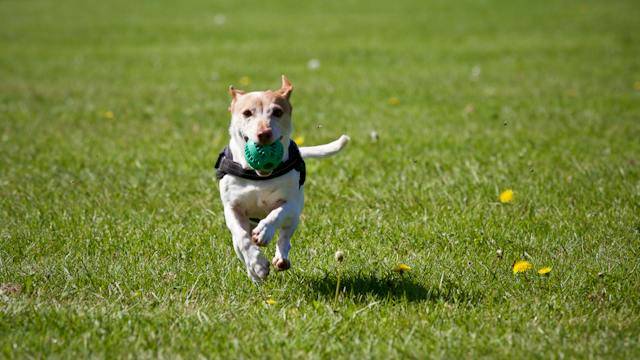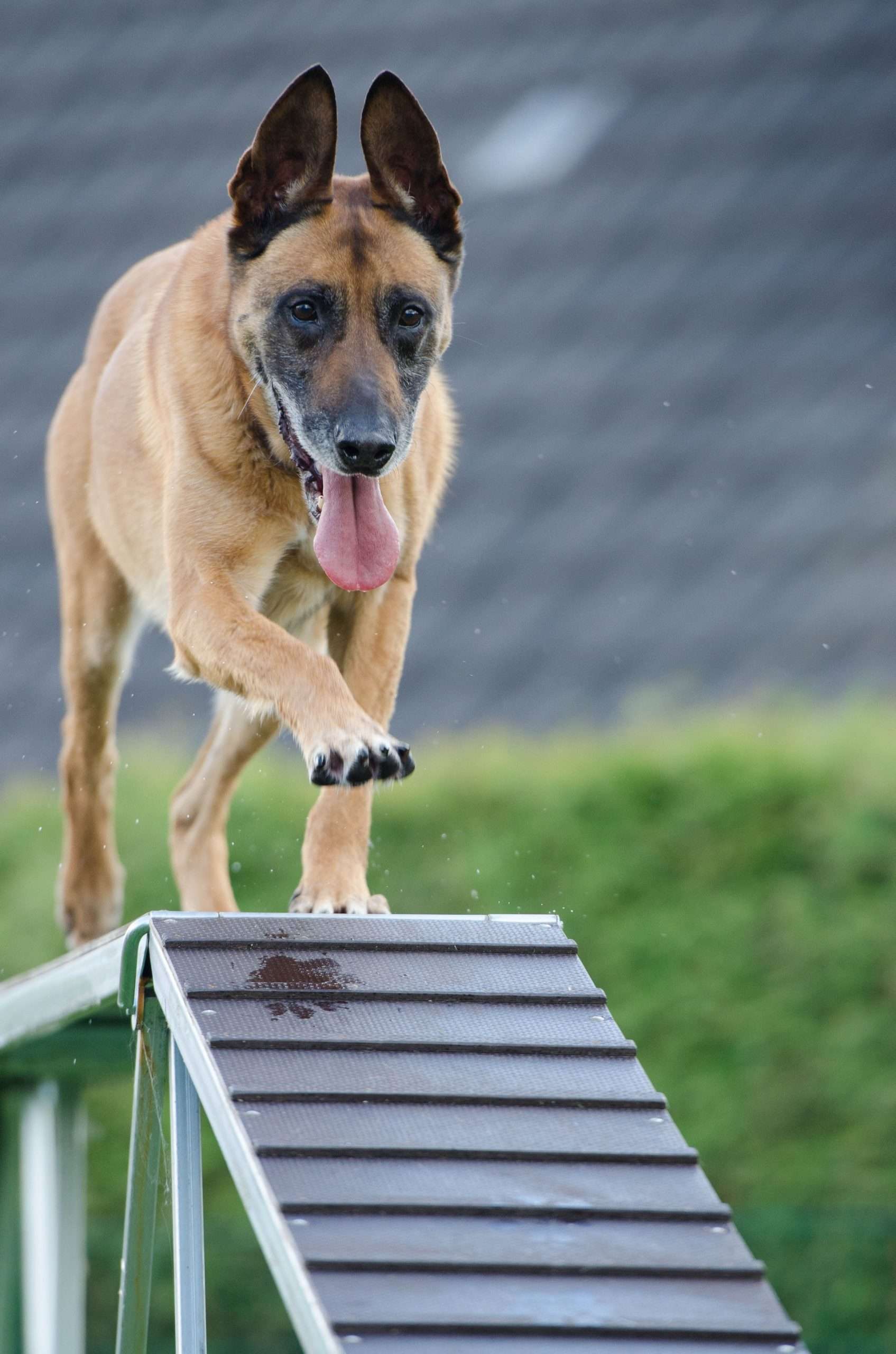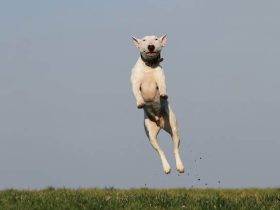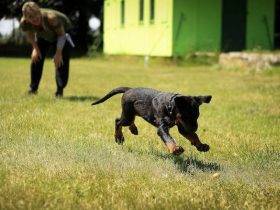Choosing the Right Treats for Dog Training
Dog training treats are an essential tool for any dog owner. Whether you’re just starting out with basic obedience commands or teaching more advanced tricks, using dog treats effectively during training sessions is important for capturing and motivating your dog’s attention. However, with the variety of treat options available, it can be difficult to determine which type is best suited for your training needs. In this comprehensive guide, we will cover everything you need to know to select the right dog treats and use them properly for rewarding positive behaviors.
Understanding the Purpose of dog Training Treats
Before diving into specific treat recommendations, it’s important to understand the purpose treats serve in dog training. At their core, dog training treats are used to positively reinforce desired behaviors and build strong associations in your dog’s mind between those behaviors and receiving a reward. When your dog performs a command correctly, the treat marker – whether verbal “Good!” or clicking a clicker – is immediately followed by a tasty reward. Over time, your dog will come to understand that obeying specific cues results in something positive.
This reinforcement combats any potential confusion your dog may experience in figuring out why you’re asking them to do certain things. By rewarding wanted behaviors consistently each time with a treat, you sculpt the learning process and pave the way for those behaviors to become habits. Keeping training sessions upbeat and reward-driven keeps your dog motivated to continue practicing. The ultimate goal is for your dog to obey commands not just for treats, but also for the joy of pleasing you.
Factors to Consider When Choosing Treats
With an understanding of their role in training, we can dive into evaluating different dog treat options based on several key variables:
- Nutritional Value: Highly processed or artificial treats should be limited, as they provide empty calories. Look for whole, minimally processed ingredients your dog can’t get enough of at other meals, like bits of chicken or pieces of carrots/green beans.
- Size & Consistency: Tiny treats allow for more rewards per training session. However, large or hard treats may be uncomfortable for small dogs to eat. Moist treats are best for capturing canine attention fast versus crunchy treats a dog has to work at consuming.
- Palatability: Choose something irresistibly tasty to your specific dog so it acts as an effective reward. Avoid anything that doesn’t excite their interest. Human food can work, but watch for calories and use in moderation.
- Handling & Storage: Hard or crumbly treats may break apart and litter your training area. Look for treats that hold their shape when handled but easily break between fingers for rewards. Consider shelf life as well.
- Your Lifestyle: Training in public? Avoid treats that may disturb other patrons or fall onto the floor. Busy schedule? Opt for non-perishable options that don’t require refrigeration.
With an understanding of these key factors, we can now review popular dog treat options and make specific recommendations. Read on to determine the ideal training treats for your individual needs and pet.
Common Treat Types for Dog Training
Soft Moist Treats
- Dog-friendly peanut butter or pumpkin puree: High in protein and fiber yet calorie-dense, making them ideal rewards. You can add them to kibble or freeze in ice cube trays. However, they may stain fur.
- Sticks of soft-baked training treats: Moist without being messy. Look for minimal ingredients like chicken, oats, carrots.
- Freeze-dried meat/liver treats: Plentiful nutritional benefits in a light, crunchy texture dogs love. Also non-perishable for travel. Watch for small sizes in some brands.
- Natural air-dried meat strips: Like jerky for dogs. Durable yet still soft enough for small mouths. Rich protein content is satisfying.
For most training scenarios, soft moist treats work best due to their palatability, convenience, and ability to quickly engage dogs. Freeze-dried and jerky options offer similar benefits with added non-perishability.
Crunchy Treats
- Small biscuit or kibble treats: Familiar flavors and textures which dogs often work hard for and perceive as higher value. Watch out for heavily processed varieties.
- Vegetable or fruit bits: Like sliced carrots, green beans, apples or banana pieces. Healthful additions to training but may lose flavor appeal fast.
- Hard or chewy training treats: Varieties made of meat, cheese or peanut butter which last longer in the mouth than softer options.
For toys or commands requiring more mental stimulation, crunchy treats can be useful to increase duration between rewards. However, they may be too difficult to eat quickly or break into small pieces during fast-paced sessions. Moist treats generally work better for capturing growing puppies’ fleeting attention spans too. Food as Training Treats
While your dog may go crazy for people food scraps at the dinner table, there are a few human foods that can be incorporated into training sensibly:
- Small pieces of baked or boiled chicken, turkey or beef: Healthy protein source dogs adore as a reward. Control calorie/fat intake by limiting to training only.
- Cooked or dried pasta: Carbs release energy fast as reinforcement during longer practices. Again, feed separately from meals.
- Tiny bits of cheese: Rich and satisfying for dogs but high in fat, so use sparingly. Harder breeds last longer in training.
- Tiny slivers of fruits like melon, banana or berries: Moist yet not too sugary. Watch for staining on light dog fur.
Never feed raw meat, dairy, cooked bones which may splinter, chocolate, nuts, onions, grapes or raisins – all toxic for dogs. When using people food, stick to miniature pieces as high-value rewards versus full meal replacements during training.
Customizing Training Treats
For the most tailored experience, some trainers and dog owners prepare their own homemade training treats. This allows complete control over ingredients as well as flexibility in size, shape and consistency. A few easy DIY options:
- Peanut butter balls: Blend peanut butter with nonfat dry milk or oats. Roll into balls and flatten between wax paper. Freeze for hardened treats.
- Meatballs: Combine lean ground turkey or beef with an egg and breadcrumbs. Scoop and bake at 350F until cooked through.
- Banana chunks or muffins: Mash very ripe bananas with grain-free flour, coconut oil and blueberries. Scoop and bake for a soft treat dogs love.
- Dehydrated veggies: Thinly slice zucchini, sweet potato, carrots etc. Spread in a single layer on dehydrator trays and dry completely for nutrient-dense crunchy rewards.
Homemade treats pair nutrition dogs require with flavors they crave in an affordable way. However, store-bought can also be convenient when accounting for shelf life and preparation time constraints.
Using Training Treats Effectively
Now that you’ve selected the ideal training treat, here are some tips for putting it to optimal use:
- Give rewards immediately after your dog completes a command. Timing is key in shaping behaviors.
- Only use a single treat per command at first. This prevents overfilling tummies or confusion over which action is being reinforced.
- Carry treats with you. Keep them on your person, not in a bag or pocket, so rewards are instantaneous to maintain focus.
- Praise in addition to treats. Verbal reward like “Good [name]!” increases bond and motivation separate from food.
- Break treats into bite sizes. This lets you award more frequently until earning enrichment chews alone as reinforcement.
- Respect training/meal boundaries. Never use kibble as training treats to avoid confusing biological drives with learning.
- Vary up rewards over time. Rotate treat flavors and types to retain interest and prevent habituation/pickiness.
Following these easy guidelines ensures treats have maximum impact guiding your puppy or dog toward conditioned responses through positive handling every step of the way. With the right treat strategy in place, both of you will find training a more enjoyable and productive experience.
Making the Switch to less Treat-Dependency
As training progresses and behaviors become habitual, most owners will want to move away from an absolute treat focus at some point. While food rewards will likely always be an integral part of maintaining and proofing commands, it’s important to also reward good behavior with verbal praise and petting alone eventually for a balanced approach.
Follow these tips to wean training dependence on treats over time:
- Randomly reward with attention/play after the command instead of a treat sometimes. This prevents outdated behaviors when no food is available.
- Break treats into smaller pieces then stop breaking them further to thin out food amounts.
- Carry treats but reward verbally more often than with feeding to shift focus.
- Offer enrichment chew toys or food puzzle toys as an occasional replacement for training treats alone.
- Proof commands when distractions are present using praise/pet rewards rather than food for extra challenging situations.
- Save treats for high-distraction public places or when really wanting to “jackpot” reward exceptional behaviors.
With the right gradual fading approach, dogs learn positive reinforcement comes in many forms beyond just food alone. This establishes a lifestyle where good manners.
Special Consideration for Puppies
When training young puppies, some additional factors come into play regarding treat selection:
- Size & choking hazard: Puppies have tiny mouths so treats must be small enough to swallow whole. Grape or peanut sizes are usually recommended.
- Calorie needs: As puppies grow rapidly, calorie requirements are higher. Training treats should account for this with options like soft-moist varieties that are dense but low in fat.
- Teething relief: Some puppies enjoy crunchy treats that help soothe teething gums. Vegetables or fruits provide this benefit along with hydration.
- Frequent sessions: Puppies have short attention spans, requiring multiple short training sessions per day with high rates of reinforcement.
For these reasons, soft treats your puppy can gulp down easily tend to work best. Homemade purees of peanut butter, pumpkin or yogurt blended with kibble are ideal for growing mouths. Slivers of cooked banana or green beans provide crunch factor too. Freeze-dried liver morsels also entice pups due to strong scents compelling exploration. Whatever you choose, monitor intake carefully due to risks of overfeeding.
Special Consideration for Senior Dogs
Older dogs may have different needs from treats as well, such as:
- Reduced calorie/carb intake: To avoid obesity or joint stress, avoid heavily processed or sugary treats for older dogs.
- Ease of chewing/digesting: Choose soft moist treats or mashed treats versus hard chews seniors may struggle consuming.
- Dental hygiene: Soft treats won’t aid plaque/tartar buildup as crunchy treats can in aging mouths. Combat this with brushing instead.
- Supplements: Some seniors benefit from training treats containing glucosamine, omega fatty acids or probiotics to support mobility and immunity respectively.
For senior dogs, mashed banana, pumpkin or yogurt; freeze-dried meat treats; and training “dough” soft treats made with limited ingredients are excellent low-impact rewards. Small bites of boiled chicken or broccoli florets also work well and provide bonus nutrition alongside training reinforcement. Frequency may need decreasing due to slower metabolisms too. Always monitor weight and discuss diet changes with your veterinarian.
Using Treats for Specific Training Objectives
Not all training applications call for the same treat style. Adjust your choice based on what you’re trying to teach:
- Basic obedience cues: Soft moist works well for sit, stay and down commands learned indoors.
- Advanced cues: Crunchy treats aid mental stimulation needed for complex behaviors like tricks.
- Duration training: Freeze-dried liver spots reward prolonged response until a jackpot reward.
- Housetraining: Small bits of hot dogs outside help puppies associate elimination locations.
- On leash manners: Training during walks calls for compact treats that don’t crumble.
- Service dog skills: Low calorie treats optimize tasks like retrieving necessities on command.
- Public access training: Avoid crumbly, smelly options that disturb other patrons.
With wisdom around matching treat types to behaviors being conditioned, your training will become more seamlessly reinforced over varied settings. Remember consistency and variety are key to retaining canine focus through different learning journeys.
Implementing a Well-Rounded Rewards System
While food is dogs’ primary drive initially, we want training to become about positive relationship-building, not an aid dependency. Include these extra layers of rewards:
- Verbal praise: Key for keeping enthusiasm high through all stages. “Good sit!” works alone eventually.
- Physical affection: A celebratory ear scratch or belly rub pairs perfectly with “You’re such a good boy!”
- Play breaks: Taking playtime as a reward motivates mental stimulation and bonding.
- Toys as jackpots: Reserve high-value squeaky toys solely for exceptional behaviors.
- Free time in yard: Release your dog off-leash for exploration as an occasional bonus.
- Enrichment at home: Provide interactive food toys, snuffle mats and puzzle feeders to reinforce calm manners too.
A balanced regimen incorporating varied natural rewards alongside limited treats teaches dogs good habits through enjoyable lifestyle engagement rather than just for tidbits alone. This establishes a lasting partnership built on mutual trust and understanding.





I’ve wanted to begin treat training for my puppy, and now I have everything I need. Great job, everyone!